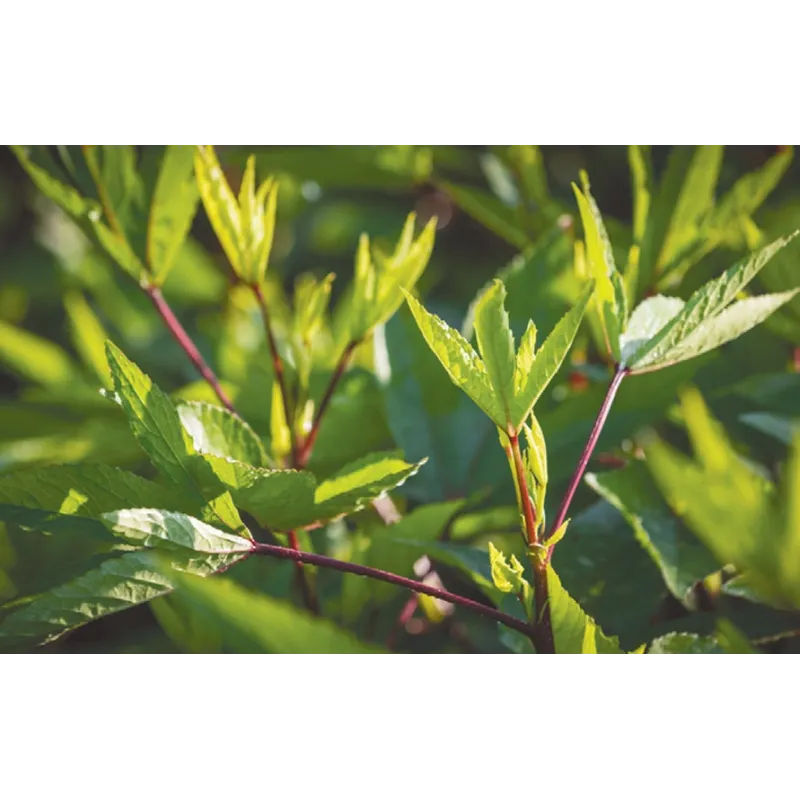Growth Stages:
- Sow the seeds 0.5 cm deep in well composted soil
- Space the seeds at 20cm by 15 cm
- Germination will take place in 6-8 days
- Harvest in 25-30 days from sowing
Sowing:
- Gongura ( ambadi ) seeds can be sown throughout the year, but the best time to sow them is in winter.
- Gongura seeds can be sown directly in raised beds, or in containers.
- Choose a container with minimum depth of 5 inches and bigger spread area. Make sure that the container of your choice has uniform drainage holes at the bottom. Grow bags and Containers.
- Fill your container with a medium.
- Ideal sowing medium to grow gongura seeds is 2 part garden soil & 1 part any organic manure or 1 part garden soil, 1 part coco peat & 1 part Vermicompost. Vermicompost
- Make shallow holes (1 cm) at a distance of 3 x 3 inches.
- Sow 2 - 3 seeds per hole.
- Push the seeds inside the medium with your finger and cover them completely with surrounding soil.
- Water the sown seed bed immediately by a light shower using a watering can. Watering Can
- If you are growing gongura seeds on outdoor raised beds, protect them from heavy rainfall or direct sunlight by making a temporary roof plastic sheet for first few days.
Caring:
- Gongura seeds will germinate within the first 6 days or even earlier.
- Tiny seedlings will be visible at this point.
- If more than one seed has germinated per hole, cut off the smaller seedlings & keep only one seedling per hole.
- Baby gongura plant will be visible in 10 - 15 days.
- Gongura needs partial sunlight for 3 - 4 hours. It can also tolerate full sun in winters.
- Water your Gongura container or raised bed every day in the form of a light shower with a watering can. You can use sprinklers for gonguras grown outdoors.
- Add good quality organic manure in the soil with 2:1 ratio before sowing seeds. Organic fertilizer can be well rotten cow dung manure, farmyard manure, compost or vermicompost.
- Check for early signs of any insect/fungal/ any other infections. If you notice any such symptoms, spray your plant with appropriate medicines.
- 25 - 30 days after sowing seeds, your gongura leaves will be ready for harvest. Cut mature leaves using a scissor leaving the fleshy base of the plant for the next harvest. In this way you can harvest Gongura 4-5 times in the intervals of 20-25 days. NOTE: Young leaves of gongura look like spinach. Leaves should be harvested while they are young. If not regularly harvested, Gongura plant can become an erect bushy shrub.
- To grow gongura microgreens, sow-scatter gongura seeds in a crowded manner in a flat container indoors. You can harvest micro greens in 10- 15 days by uprooting baby plants.
- Hold the seeds and sow 2-3 seeds per cell/cup. Since Lavender seeds are small in size, do not sow them deep
Common Problems:
1.Why are my gongura seeds not germinating?
Improper growing conditions like over watering/ under watering, not enough sunlight or sowing in the seeds too deep can all affect the germination process of your gongura/ambadi seeds. Make sure you are following the sowing and growing instructions correctly to ensure successful germination.
2.Why are my gongura leaves turning yellow?
Too much or too little water can turn the leaves of your gongura plant yellow. Make sure you are watering your plant adequately. Water your Gongura container or raised bed every day in the form of a light shower with a watering can. You can use sprinklers for gonguras grown outdoors.
3.Why is my gongura plant drooping?
Lack of sunlight often leads to drooping of your plant. Gongura needs partial sunlight for 3 - 4 hours. It can also tolerate full sun in winters. Make sure your plant is getting enough sunlight.







